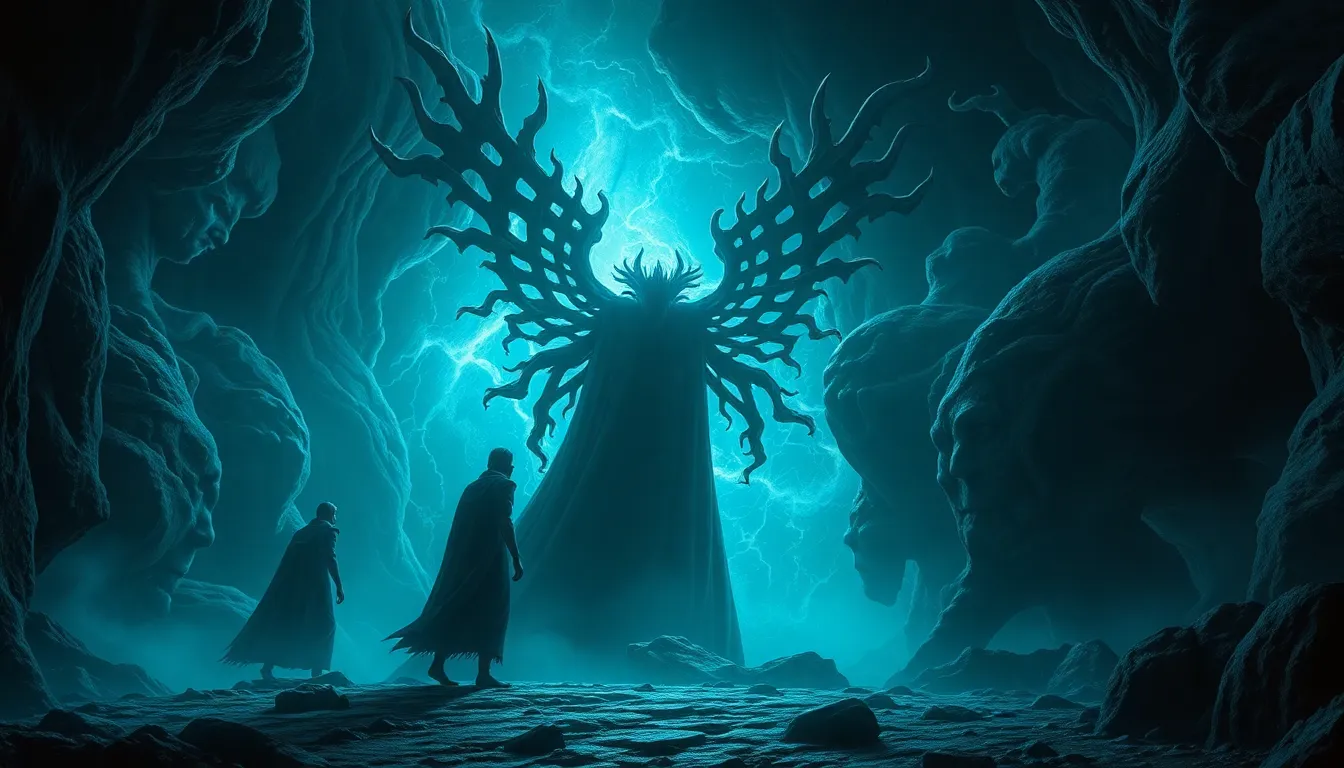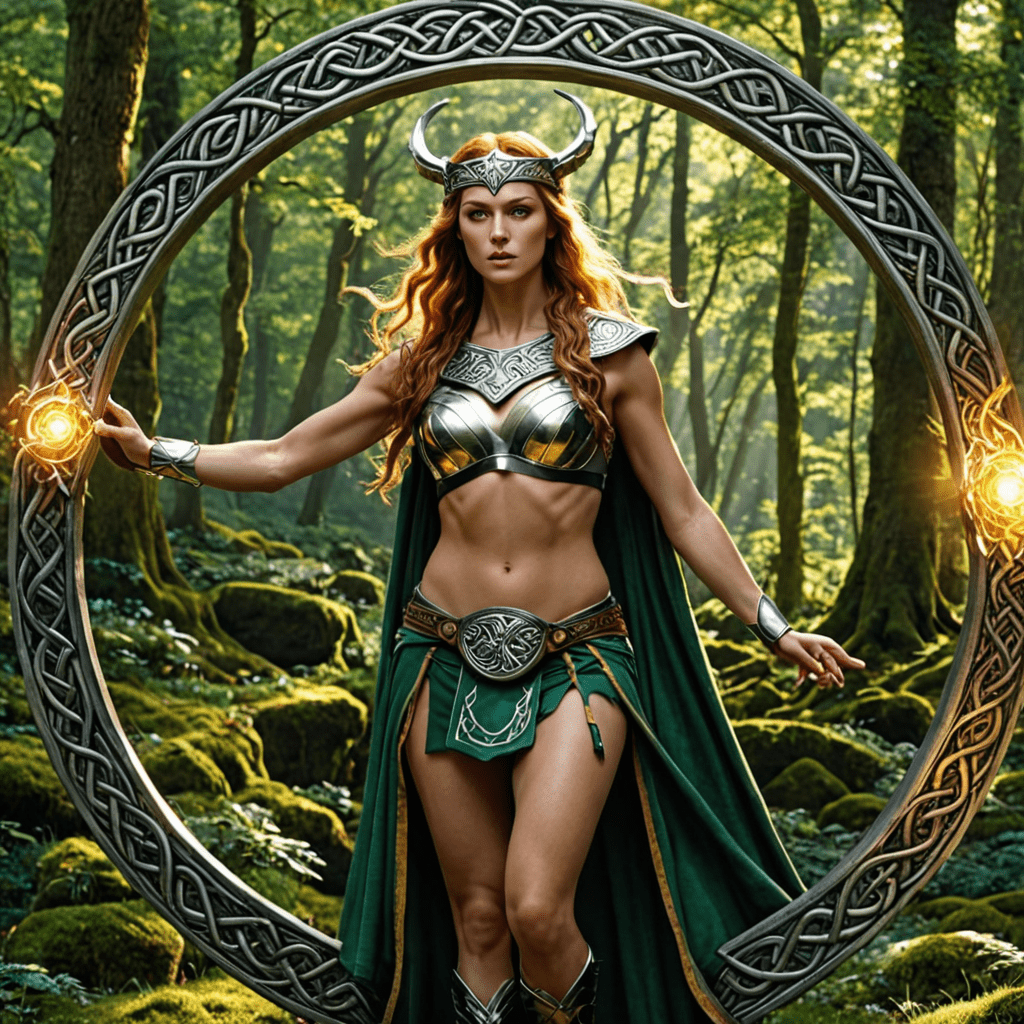Underworld Legends: The Myths That Shape Our Understanding of Death
Introduction
The concept of underworlds pervades various mythologies across cultures, each offering unique perspectives on death and the afterlife. From the shadowy realms of the ancient Greeks to the serene landscapes depicted in Eastern beliefs, these myths serve as narratives that help societies grapple with the inevitability of mortality. They shape cultural perceptions of death, providing frameworks within which individuals and communities can understand loss, grief, and what lies beyond.
The Underworld in Ancient Civilizations
In ancient civilizations, beliefs about the underworld were deeply intertwined with social and religious practices. In Mesopotamia, the underworld, known as Kur, was a dreary place where souls resided in darkness, highlighting a pessimistic view of the afterlife. The deceased were often buried with goods to assist them in their journey, reflecting a belief in the importance of provisions for survival in the afterlife.
Similarly, Ancient Egypt presented a more elaborate view of the afterlife. The Book of the Dead served as a guide for the deceased, detailing the journey through the afterlife and the judgments they would face. Key elements included:
- The weighing of the heart against the feather of Ma’at, symbolizing truth and justice.
- The journey through the Duat, where souls faced various trials.
- The promise of eternal life in the Field of Reeds for the worthy.
This emphasis on the afterlife influenced social structures, leading to monumental burial practices and the veneration of the dead.
Greek and Roman Perspectives on the Afterlife
Greek mythology introduced the concept of Hades, a realm that was both feared and revered. Hades, ruled by the god of the same name, consisted of various sections, including the Elysian Fields, a paradise for heroes and the virtuous. This duality in the afterlife reflects the Greeks’ complex attitudes toward mortality:
- Hades as a place of shadows for the ordinary souls.
- The Elysian Fields representing hope for a blissful existence after death.
Roman mythology adopted and adapted Greek beliefs, further shaping contemporary views on death. The Romans emphasized ancestor worship and the importance of funerary rites, believing that the dead could influence the living. This influence is evident in modern practices surrounding death, such as memorial services and the reverence for ancestors.
Norse Mythology: Hel and Valhalla
The Norse mythology presents a stark contrast with its concepts of Hel and Valhalla. Hel, ruled by the goddess of the same name, was a place for those who did not die gloriously in battle, while Valhalla was a majestic hall for those chosen to join Odin after dying heroically. This reflects the Viking ethos of honor and bravery:
- Valhalla was seen as a reward for warriors, emphasizing the glory of dying in battle.
- Hel was a more neutral space, highlighting the inevitability of death regardless of one’s life choices.
These beliefs illustrate the Norse perspective that valor in life could secure a favorable afterlife, shaping their cultural attitudes towards death and legacy.
Eastern Interpretations: Hinduism and Buddhism
In Eastern philosophies, concepts of death and the afterlife are profoundly influenced by the ideas of rebirth and karma. In Hinduism, Yama, the god of death, presides over the realm of the dead, where individuals face the consequences of their actions through reincarnation. Key beliefs include:
- The cycle of samsara, or the continuous cycle of life, death, and rebirth.
- The law of karma, which dictates that one’s actions influence their future lives.
Buddhism similarly emphasizes the cycle of rebirth but focuses on achieving enlightenment (nirvana) to escape this cycle. This process reflects a more individualistic approach to death, where the goal is liberation from suffering.
Indigenous Views on Death and the Underworld
Indigenous cultures around the world have their own rich tapestry of beliefs regarding death and the afterlife. Many view death as a transition rather than an end, with the following common themes:
- Ancestor worship, where the spirits of the deceased play a crucial role in guiding the living.
- Spiritual journeys, often involving rituals that honor the dead and celebrate their continued presence in the community.
These beliefs foster a sense of connection between the living and the deceased, emphasizing the importance of remembering and honoring those who have passed.
Modern Interpretations of Underworld Myths
In contemporary culture, ancient myths about death are frequently reinterpreted through literature, film, and art. These mediums explore themes of mortality and the afterlife, often blending traditional narratives with modern sensibilities. Notable examples include:
- Films like “Coco,” which celebrate the Day of the Dead and the importance of remembering ancestors.
- Literature that revisits Greek and Roman myths, providing new insights into the human condition.
This reinterpretation reflects an evolving understanding of death, allowing individuals to find meaning and connection in ancient narratives.
Psychological and Philosophical Implications
Myths surrounding the underworld play a significant role in how individuals cope with grief and mortality. They offer frameworks for understanding loss and provide comfort in the face of death. Philosophically, discussions about the meaning of death often draw on these legends, exploring questions such as:
- What happens after we die?
- How do our beliefs shape our experiences of grief?
Such discussions encourage introspection and can lead to a deeper appreciation of life and its transient nature.
Cultural Rituals and Practices Surrounding Death
Funerary practices across cultures are heavily influenced by underworld myths. These rituals serve as a bridge between the living and the dead, ensuring that the deceased are honored and their spirits are guided to the afterlife. Common elements include:
- Burial and cremation practices that align with cultural beliefs about the afterlife.
- Rituals that involve offerings to the dead, reflecting the belief in the continued existence of the deceased.
The significance of these rituals underscores the universal human desire to find meaning in death and maintain connections with those who have passed.
Conclusion
Underworld legends continue to play a pivotal role in shaping our understanding of death. From ancient civilizations to modern interpretations, these myths provide insights into our fears, hopes, and beliefs about what lies beyond. As we navigate the complexities of mortality, these narratives remind us of our shared humanity and the enduring quest for meaning in the face of death.




